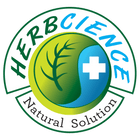The first thing that catches the attention of a person is hair, and it sets the tone for an entire look. Hair is also one of the most important parts of your appearance.
“Good hair boosts our self-confidence”
What exactly is hair damage
Damaged hair develops cracks in the outer layer of the hair’s cuticle. The crack opens, and the shaft appears dry and brittle.
Damaged hair appears
- Fizzy
- dull
- knotted
- Brittle
- Unmanageable
- coarse
- Lack of luster
Types of hair damage
Dry and damaged hair:
Harsh chemicals in shampoos remove the hair's natural oils, causing it to look dull. Damaged hair is dry and lacks natural oils on the hair's outer layer.
Tangles:
Hair damage occurs when moisture is lacking in the hair. Damaged hair is more susceptible to knots.
Frizz:
When the cuticle does not lie flat, frizz occurs. This problem can be seen at the surface and crown levels.
Brittleness and Breakage:
Hair brittleness and breakage can be caused by split ends, in which a hair strand splits into two.
What causes hair damage
Using heating tools for hair styling:
When styling hair, heat is applied, which can open the cuticle and make the hair dry and porous.
Bleaching and chemical dyes:
Hair color is lowered when artificial coloring is used. Bleaching makes hair dry, brittle, and rough.
Other causes:
- excessive massaging while shampooing
- brushing and rubbing hair too vigorously
- taking hot showers
- being exposed to the sun
- undergoing chemical treatments
- having a specific health condition
How do you treat damaged hair?
Oiling, washing, and conditioning hair are the basics of any hair care routine. Selecting hair care Products needs research on your hair before purchasing. Using 100% natural and herbal products is always safer. Hair care products are:
- Hair oils
- Hair shampoo
- Hair conditioner
Hair oil:
Toxic Chemicals in commercially available Hair Oil:
Mineral oil, paraffin, and artificial fragrances are all harmful chemicals found in hair oils. These substances are damaging to both the environment and humans, so we should be careful about the cosmetics and personal care items we choose.
Hair shampoo:
Shampoos are the most commonly used product in hair care. The majority of shampoos available on the market contain toxic chemicals which can lead to harmful side effects like cancer, reproductive issues, hormonal imbalances, and water pollution.
Ingredients to be avoided in Hair Oil:
- Mineral Oil
- Liquid paraffin
- DMDM Hydantoin
Safe Natural alternative ingredients for Hair oil
- Best hair growth-promoting oils:
- Coconut oil
- Sesame oil
- Castor oil
- Essential oils like Neroli, Lemongrass, liquorice
- Herbs promoting hair growth:
- Curry leaves
- Amla
- Bringaraj
- Methi
Hair conditioner
Conditioner is a vital step after shampooing, for an easier and more manageable hairstyle. Though most conditioners contain harmful chemicals which may cause allergic reactions. These chemicals include sodium Laureth sulfate and sodium lauryl sulfate.
All these chemicals are carcinogenic, irritant to the skin, or contain benzophenone, cetrimonium chloride (ceteareth-12), or 20 (DMDM hydantoin), Diazolidinyl urea (-isopropanol). But if you use natural ingredients in the conditioner like glycolipids (natural surfactants), and apigenin herb extract from chamomile flowers(gallic acid derivatives). It acts as a DHT blocker to prevent hair loss.
Toxic Chemicals and their side-effects in commercially available Hair Conditioners:
Conditioners frequently contain harmful ingredients, resulting in a variety of side effects. Protein, for example, may cause contact dermatitis, as well as damaged or weakened hair.
This article will tell you about the dangerous substances found in conditioners and how to avoid them to maintain healthy hair. Ingredients to be avoided in Hair Conditioners:
- Sulphate
- Formaldehyde
- Parabens
- Phthalates
- Dimethicone
Conditioners with natural ingredients are mild and they do not damage the hair. Phyto-constituents in herbs like Saponins in Soapnut, Aloe Vera, etc., help keep follicles clean and unclogged so that hair has an optimal environment to grow.
They also prevent sebum production and slow or stop the production of 5-lipoxygenase (5-LOX), which is responsible for triggering inflammation and itchiness. Vitamins like Vitamin A, B, C, and E are included as well as minerals such as Zinc and Copper found naturally in herbs such as Amalaki, Aloe Vera, etc., providing overall nourishment to hairs.
But, what’s the best Natural Hair care promotes that promotes hair growth, prevents hair loss, and boosts Natural Hair Colour? Here we come to your rescue “Herbcience”
Why HERBCIENCE?
Herbcience is a 100% transparent brand and all the products are developed by doctors, with the fresh extractions of herbs. They are 100% Natural certified by ECOCERT - COSMOS Natural, a European Standard, AYUSH, Govt. of India, and compliant with MADE SAFE, USA.
HERBCIENCE – Pro- V Keratin Hair Oil – 100% Natural & 100% Safe
The benefits of HERBCIENCE Natural Hair Oil are:
- Promotes Hair Growth
- Prevents Hair Loss
- Boosts Natural Hair Color
HERBCIENCE – Nourishing Pro-V Keratin Shampoo – 100% Natural & 100% Safe
The benefits of HERBCIENCE Natural Shampoo are:
- Deep Cleansing
- Anti - Dandruff
- Hair Growth
Replenishing Pro-V Keratin Hair Conditioner
The benefits of HERBCIENCE Natural Hair Conditioner are:
- Hair Conditioning
- Anti-Dandruff
- Promotes Hair Growth
- Prevents Hair Loss
Conclusion
Good hair makes you feel good and confident, so choose the correct products for your hair. Treating it naturally will give you the nourishment needed to maintain a healthy head of locks. Don’t let summer change your healthy hair.
References:
- https://www.healthline.com/health/mineral-oil-for-hair#mineral-oil-for-hair-side-effects
- https://pubchem.ncbi.nlm.nih.gov/compound/DMDM-Hydantoin
- https://pubmed.ncbi.nlm.nih.gov/30145645/.
- https://www.dhs.wisconsin.gov/chemical/sulfates.htm
- https://www.cancer.gov/about-cancer/causes-prevention/risk/substances/formaldehyde/formaldehyde-fact-sheet
- https://www.fda.gov/cosmetics/cosmetic-ingredients/parabens-cosmetics
- https://www.cdc.gov/biomonitoring/Phthalates_FactSheet.html
- https://www.ncbi.nlm.nih.gov/pmc/articles/PMC4458934/
- https://pubmed.ncbi.nlm.nih.gov/19277688/
- https://www.ncbi.nlm.nih.gov/pmc/articles/PMC2763764/



